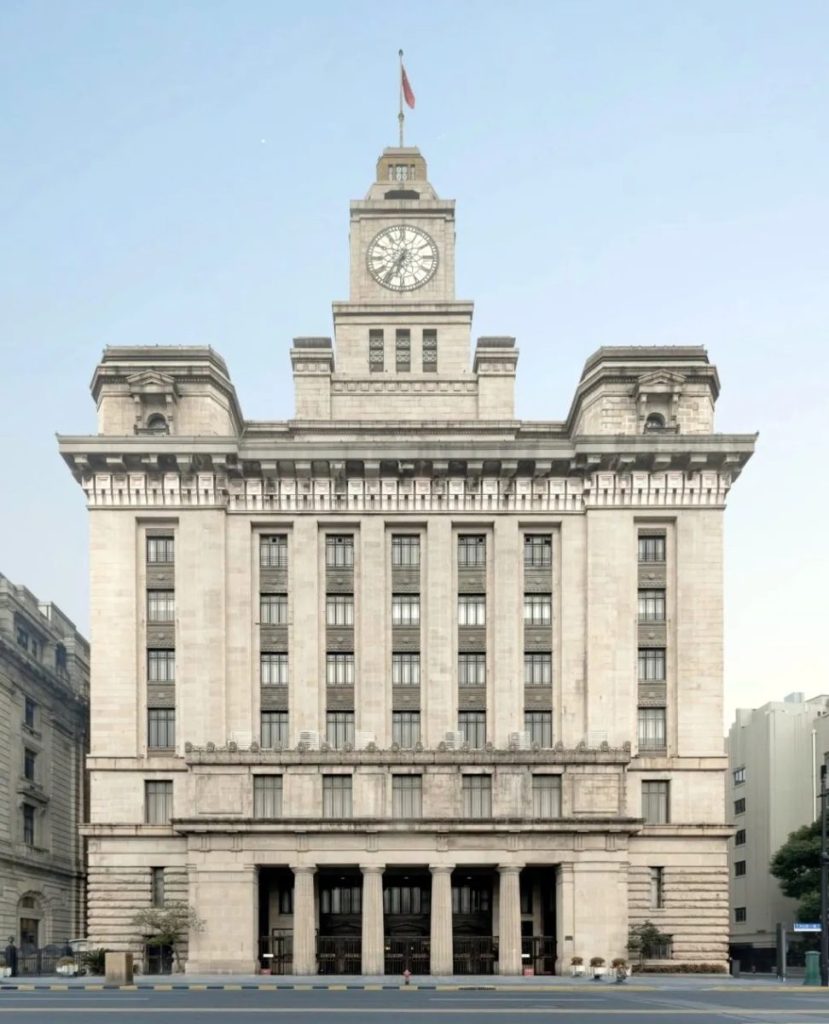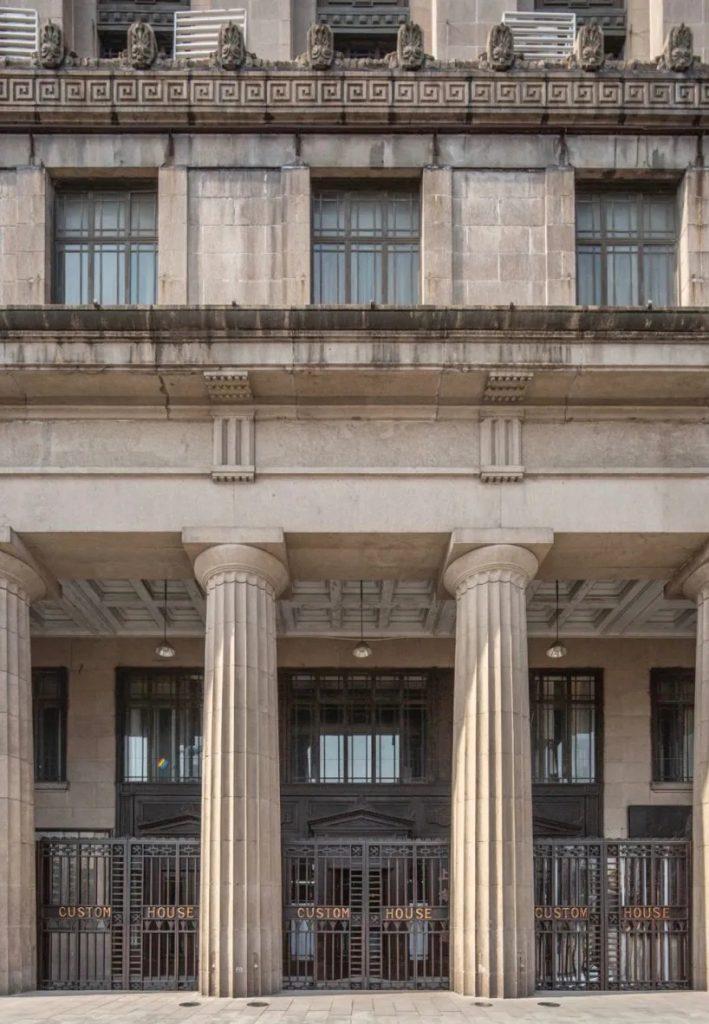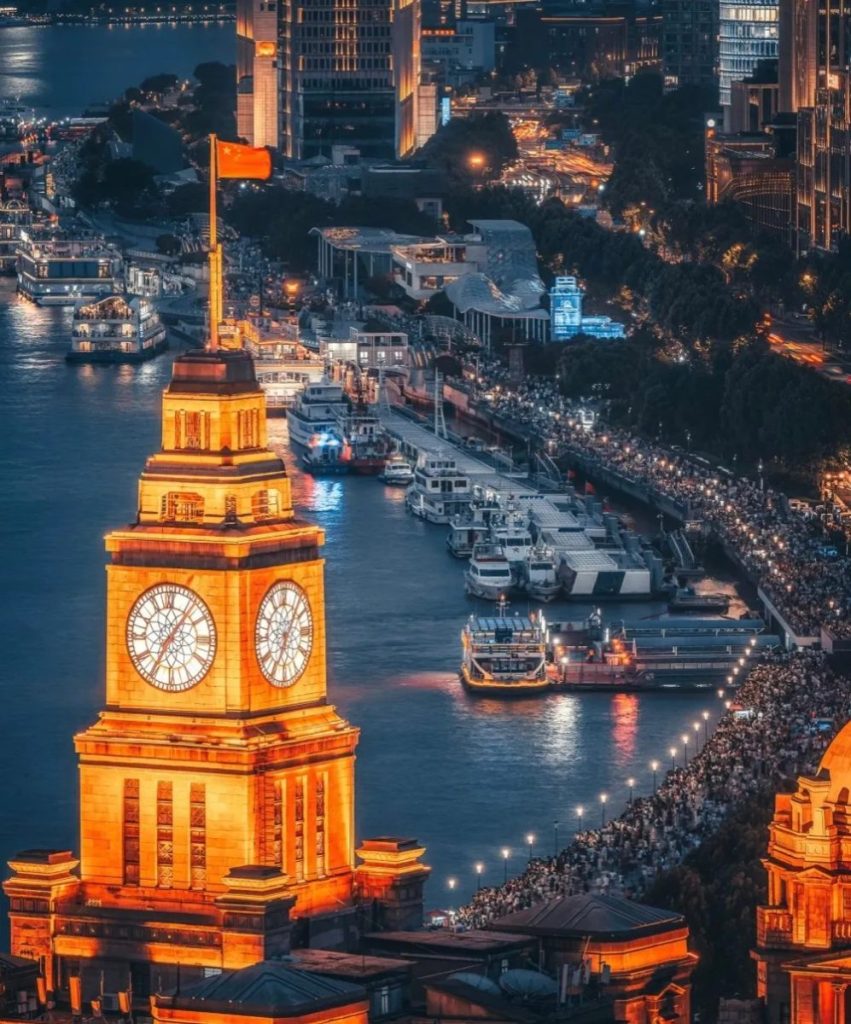Shanghai Customs Building (also known as Jiang Customs or Qing Jianghai North Customs) is one of the most iconic buildings on the Bund in Shanghai.
It has witnessed the opening and development of Shanghai for nearly 200 years, and carries the heavy memory of modern Chinese history and unique architectural aesthetics.
History of Shanghai Customs Building
Origin (1845)
The Qing government set up the Jianghai North Customs Building here, and the initial building was in the typical Chinese official government office style: concave plan layout, three courtyards with heshan roofs, and the lintel of “Jianghai North Customs Building” was personally inscribed by the Governor of the Two Rivers.

History of Reconstruction
Restored in 1857: the original building was destroyed after the Swordsmen’s Uprising and rebuilt in its original form.
The new building was completed in 1893: under the leadership of the British, American and French tax committees, it was designed by British engineers and constructed by the Pudong Construction Factory. The new building retained the concave zigzag layout and added a 6-story clock tower, which became the highest point on the Bund at that time.
Final form in 1927: HSBC designer Wilson created a modern version of the Customs Building, with a steel frame supporting 11 floors (including the clock tower), in a Greek neoclassical style, making it the tallest building on the Bund.
Shanghai Customs Building Architectural Features
Exterior Design
A model of eclecticism: fusion of classical and modern elements, Greek neoclassical portico with Art Deco clock tower.
Iconic clock tower: the four-sided clock is 5.4 meters in diameter, the copper hands weigh tens of kilograms, and the 2-ton pendulum strikes the hourly chime, which can be heard for miles.
Fine decoration: the rough stone base at the bottom, the granite walls in the middle, and the divided bell tower at the top show a sense of volume and soaring.

Interior Space
Highlights of the lobby: octagonal wells inlaid with eight nautical-themed mosaic murals, colorful mosaic flooring
Materials and techniques: teak floor parquet, plaster relief ceiling, showing the top architectural techniques of Shanghai in the 20th century.
Shanghai Customs Building Tour Guide
Address: No.13 Zhongshan Dong Yi Road, Huangpu District, Shanghai, China
Transportation: 10-minute walk from East Nanjing Road Station on Metro Line 2/10.
Neighboring Attractions: Forms a historical landscape with the Bund Compound,HSBC Building
Must-see highlights:
Asia’s earliest customs clock (sister to London’s Big Ben)
The stunning sound effect of the bells ringing at every hour.
Day and night contrasts between the light and shadow of the building’s exterior and the view of the Huangpu River

The Customs House on the Bund is now a Shanghai Cultural Relics Protection Unit and is open to the public on a continuous basis.
The Customs House is not only an architectural masterpiece, but also carries the transformation of Shanghai from a fishing village to a cosmopolitan city.
It has witnessed the change of customs sovereignty in modern China, the wave of reform and opening up, and is still a symbol of Shanghai’s finance and culture.
The clock tower, which combines a sense of history and architectural aesthetics, has become a “space-time coordinate” for interpreting Shanghai’s Bund, attracting tourists from all over the world to listen to the story of the city’s bells.
